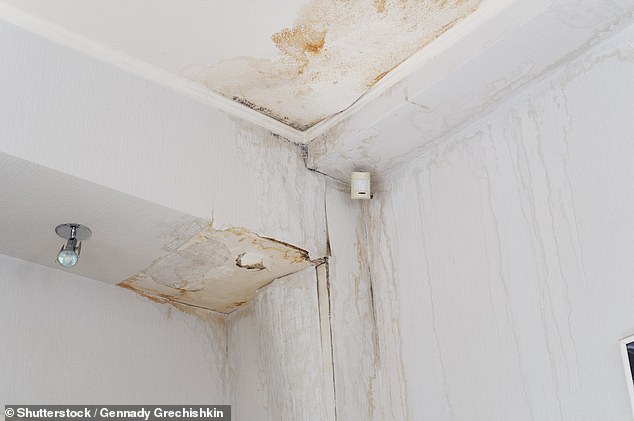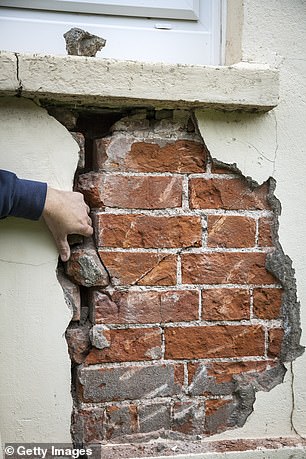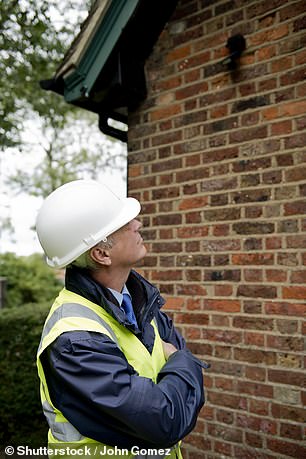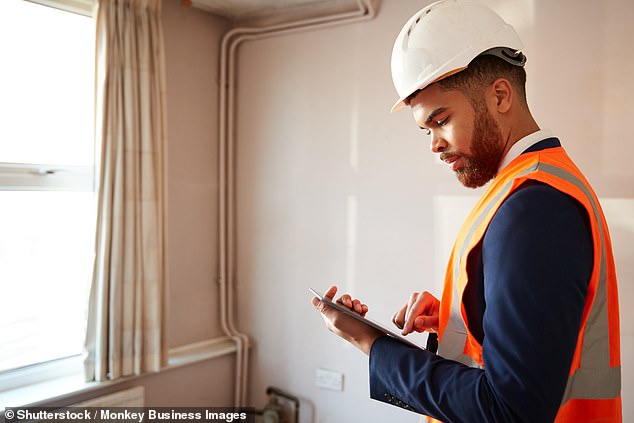Table of Contents
Caveat emptor – ‘let the buyer beware’ – is a phrase that couldn’t be more pertinent when purchasing property.
Once you’ve completed a purchase, the last thing you want is to discover that your beautiful new home hides nightmares behind every corner.
Having put your savings towards the deposit, legal and mortgage fees and furniture, you don’t want to spend even more on repair bills that could have been avoided.
Most qualified surveyors are members of the Royal Institute of Chartered Surveyors (RICS).
After an offer on a property is accepted, buyers have the option of arranging an independent survey before exchanging contracts.
It’s not a legal requirement, but without it they could be unaware of all sorts of costly problems: rising damp, subsidence, roof leaks, dry rot and asbestos, to name a few.
A surveyor’s job is to inspect the condition of the property so that the buyer can move into their new home aware of any potential problems.
What are the different types of survey?
To make life a little more complicated, there are different types of surveys to choose from.
If you buy with a mortgage, the lender will carry out their own valuation of the property.
This is only to evaluate that the property meets your lending criteria and that the amount paid represents the market value.
“Any potential buyer should be warned that a mortgage valuation will not be sufficient to protect their interests,” says Grant Barnes, managing director of Barnes and Barnes Chartered Surveyors.
‘This is because this is an assessment, not a survey. It fits the bank’s lending criteria and may have been provided by a surveyor simply by searching online or conducting a drive-by inspection, without the property having been entered.’
According to real estate advisory service Homeowners Alliance, there are different levels of survey.
The cheapest and most basic survey you can get is a ccondition reportwhich usually costs £300 or more.
“It provides a summary of the property’s defects, including potential risks affecting the home, but does not include any advice or assessment,” says Paula Higgins, founder of the Homeowners Alliance.
The next level is a hReport from some buyerswhich is the most popular survey among buyers according to the Royal Institute of Chartered Surveyors.
This will usually cost £400 or more, depending on the size of the property, and can include both a survey and valuation if required.
“This survey is non-intrusive, so a surveyor will not look behind furniture, lift floorboards or drill any holes, so their report is limited,” says Higgins.
The most comprehensive survey a buyer can choose is a bconstruction surveyalso know as yesstructural study.
The price of a building survey usually ranges between £500 and £2,000, depending on the size of the house, according to the Homeowners Alliance.
“The inspector will go into the attic, check behind the walls, and look between the floors and above the ceilings,” says Higgins.
“This survey includes advice on repairs, with estimated times and costs, and will tell you what will happen if you don’t make repairs.”
What about newly built homes?
New build properties are unlikely to have problems such as damp or subsidence, but it could still be worth carrying out a survey.
Higgins recommends buyers hire a professional yesannoying survey carry out; this will normally cost between £300 and £600.
“A problem survey will identify defects or issues that need to be addressed before you move in,” says Higgins.
“It should detect minor problems, such as a misaligned door caught in the carpet, to something more serious that could affect the structure of your home.”

A leaky roof can lead to a costly repair bill, so you may want to renegotiate the purchase price.
Which survey should you choose?
The choice of studio will largely depend on the property in question.
“Listed properties or those that are of non-traditional construction will be best suited for a more detailed full structural study,” says Barnes.
‘It may also be advisable to opt for a more in-depth study if a property has undergone some form of structural alteration, such as if the roof has been modified or extended.
“Every property is different, but your surveyor should be able to give you some advice on the most appropriate survey for your needs depending on the age of the property, its condition and whether it has been structurally altered.”
What kind of dangers can lurk inside a house?
There are thousands of different problems that can arise in a property, and not just in old Victorian houses or renovations.
Deteriorated or cracked bricks, leaking drains, old wiring, disrepair plumbing, woodworm, dry or wet rot, and lead pipes are all issues that a surveyor may need to bring to your attention.

An estimator will bring to your attention any defects that may require repair once you have moved out.
“Structural movement is a vital issue to pay attention to,” says James Perris, chartered surveyor at De Villiers. ‘This may be due to foundation failure or historic alterations such as conversions or removal of walls.
‘Moisture is a common problem, caused by rain or groundwater ingress or pipe failures.
“Another problem that regularly comes to the fore is the failure of the tiles or the roof structure, due to the passage of time or modifications.”
Asbestos can potentially be found in any residence built or renovated before the year 2000, because it was used in almost all buildings during most of the 20th century, Perris warns.
This can be pipe lining, vinyl flooring, textured ceiling or wall covering, or attic insulation.
Asbestos is not dangerous unless disturbed, so if you intend to renovate the property once you move in, it would be wise to have it checked as asbestos removal can be a very expensive process.
“The worst problems are usually those that affect the stability or salability of the property, which in turn impacts the value,” says Barnes.
‘For example, if a period house experiences continuous movement caused by nearby vegetation causing shrinkage of the clay subsoil, it is unlikely to be considered suitable for bank loans.
“Other potential issues may arise if a property is situated in an area that is considered at risk of flooding, making underwriting difficult.”
According to Barnes, a good surveyor will likely raise issues outside of the property itself.
These include rights of way that a neighbor might have over their land; road agreements; responsibility for drains or sewers and any nearby planning or road proposals.
“A surveyor should examine the house and its surroundings, including access issues, shared responsibilities, nearby trees, pylons or electrical substations, and cell towers, among other things,” Barnes says.

A good surveyor should notice problems outside the property as well as within its walls.
What should you do if a surveyor finds problems?
If a surveyor finds issues that require attention, it would be wise to have a specialist investigate further.
For example, an asbestos survey, a fire risk assessment or a damp and timber assessment will provide the buyer with a clearer picture.
Ultimately, the buyer will be in a position where they will have to investigate further, renegotiate, or walk away.
“Whether a buyer decides to abandon a purchase or renegotiate will depend on their tolerance for having repair work done,” Perris says.
‘If a buyer wishes to renegotiate, I would recommend that they obtain an estimate of the costs to show the seller’s agent.
“Being open about the issues and showing evidence of likely repair costs will help negotiations and prevent the buyer from simply trying it on.”
Some links in this article may be affiliate links. If you click on them, we may earn a small commission. That helps us fund This Is Money and keep it free to use. We do not write articles to promote products. We do not allow any commercial relationship to affect our editorial independence.


